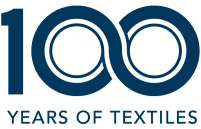MEDIA CONTACTS:
Angela Olson, olsona gwu [dot] edu (olsona[at]gwu[dot]edu)
gwu [dot] edu (olsona[at]gwu[dot]edu)
The George Washington University
Chita Middleton, cmiddleton textilemuseum [dot] org (cmiddleton[at]textilemuseum[dot]org )
textilemuseum [dot] org (cmiddleton[at]textilemuseum[dot]org )
The Textile Museum
Washington, D.C.—The Textile Museum announced today that educator and scholar Milton Sonday will be the 2011 recipient of the George Hewitt Myers Award, one of the highest accolades in the field of textile arts. The Myers Award, named for The Textile Museum’s founder and given by the Board of Trustees, recognizes an individual’s lifetime achievements and exceptional contributions to the field of textile arts. Previous recipients include author and publisher Michael Franses (2010); researcher Mattiebelle Gittinger (2009); scholar Jon Thompson (2008); collector and philanthropist Lloyd Cotsen (2007); the late Josephine Powell (2006), an ethnographer and photographer; and textile designer Jack Lenor Larsen (2005). The award will be presented to Sonday in October 2011 in Washington, D.C.
Sonday’s research has focused on textile techniques, structure and pattern; including the detailed analysis of complex weaves and European laces. He is renowned for his elegant diagrams of textiles, which have evolved from color-coded drawings, to paper constructions, to pencil illustrations. Through an insistence that the same professional standards that apply to other areas of scholarship should be applied to the study of the textile arts, Sonday has shaped the direction of the field of textile studies. He has worked to create programs on textile analysis known for their exhaustive thoroughness at museums throughout the country (including the Museum of Fine Arts Boston, The Victoria and Albert Museum, and The Cleveland Museum of Art), and has also served as guide and mentor to individual researchers. Sonday was also a founding member of the Textile Society of America in 1987 and served as its president, shaping many initial policies.
When asked to describe his career, Sonday said, “It started at The Textile Museum.” Joining as staff artist in 1961, Sonday became a curator and was placed in charge of the rug collection, eventually organizing the first exhibition of Chinese carpets, East of Turkistan: An Exhibition of Chinese Rugs and Textiles (1967). He would publish extensively with The Textile Museum, including as a key scholar in the museum’s 1987 publication Woven from the Soul, Spun from the Heart, and several articles in The Textile Museum Journal, including analyses of velvet.
Sonday’s 30-year tenure with the Smithsonian’s Cooper-Hewitt National Design Museum began in 1968. With his attuned eye and acute understanding of the many ways textiles are made and patterned, he recommended significant additions to the Cooper-Hewitt’s comprehensive collection, including international examples of cutting-edge textile technology, such as the work of Japanese textile innovator Junichi Arai, who created advanced fabrics for the likes of Issey Miyake and the Nuno Corporation. His exhibitions with the Cooper-Hewitt included the beautiful Lace (1982) and the full-floor show Color, Light, Surface: Recent Textiles (1990). Color, Light, Surface featured a large collection of commercially and independently produced lengths of fabrics of the 1980s from Europe, the United States and Japan.
“From the analysis of historical velvet and lace, to showcasing the exceptional continuous patterns of Persian textiles through elegant drawings, Milton Sonday has clearly documented the inherent complexity of textiles to scholars and the public alike,” said Bruce Baganz, President of The Textile Museum Board of Trustees. In addition to structure analysis, Sonday is renowned for his research into the little-studied field of continuous pattern. Textile Museum Research Associate for Southeast Asian Textiles Mattiebelle Gittinger (and 2009 recipient of the Myers Award) explained, “He has taught nuance in structure and pattern to a generation of textile scholars and graced the field with lucidity and artistry in his textile drawings and diagrams.”
Today Sonday divides his time between New York and Pennsylvania, and continues independent research in addition to creating original textile art. In his most recent work he weaves narrow strips of paper to combine two contrasting images—resulting in ikat-like pieces that are as aesthetically pleasing as they are illuminating.


